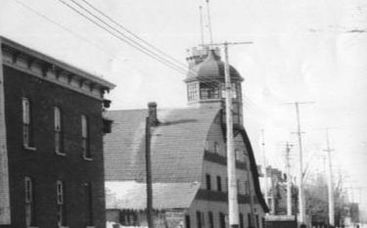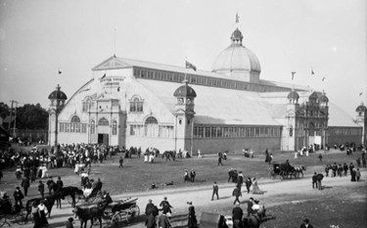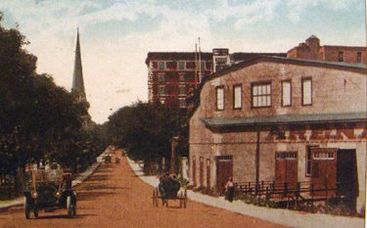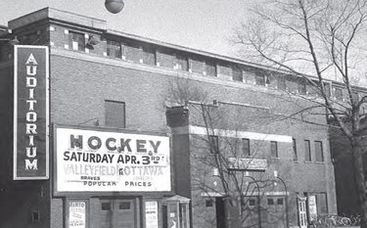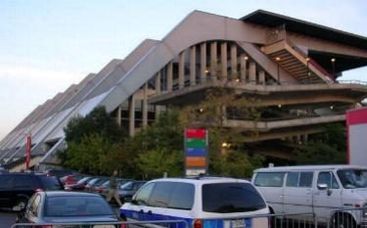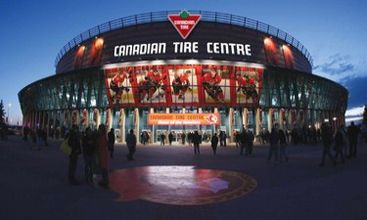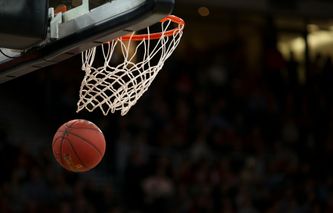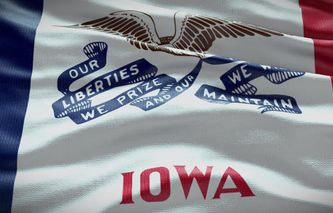Established in 1883
First Game NHA Game: January 1910*
Last Game Played: March 15, 1934**
Moved to St. Louis in 1934
*-Played in NHA 1910-1917 **-On Hiatus 1931/32

Historical Moments
1883-1900:The first organized hockey team in Ottawa was the Ottawa Hockey Club, which was formed in 1884 at the 1884 Montreal Winter Carnival. They would later be dubbed the Generals, because of their war emblem style logo in 1890. The Generals would help found the first major organized hockey league in Canada called the AHA (Amateur Hockey Association) in 1886. In 1890 they also helped found the OHA (Ontario Hockey Association) and played in both leagues until about 1895/96, where they dropped out of the OHA to concentrate exclusively on the AHA. In 1893 the Generals barely lost out to the Montreal AAA as champions of the AHA and therefore, just lost out on winning the very first Stanley Cup. Desperate to win a Cup for Lord Stanley (who lived in Ottawa at the time), the Generals faced off against the Montreal AAA on March 22, 1894, in what is considered the first Stanley Cup Finals game ever played. Ottawa grabbed an early 1-0 lead thanks to Chauncey Kirby’s goal, as the Generals dominated thanks mostly to the inspired play by a young Harvey Pulford. However, Montreal stormed back with three straight goals to win 3-1 and retain the Cup. The Generals would not challenge for the Stanley Cup for ten years as their 1901 CAHL Championship was too late in the year to put a challenge in for the Cup.
1902-1909:The Generals were restructured as the Ottawa Senators in 1902, unveiling distinctive red, black and white striped uniforms. Even though they were officially known as the Senators, the media and fans called the team the Silver Seven, as their owner was known for paying his players with silver nuggets (even though they were supposed to be amateurs). Since hockey was a seven on seven matchups back then, the name Silver Seven was a natural fit. The Silver Seven were an incredible team, not only could they score, but they were also played rugged defensively. In March of 1903, the Silver Seven finally captured eh Stanley Cup slaughtering the Montreal Victorias 9-1 in a total goal series. They would quickly accept a challenge from the Rat Portage Thistles beating them in two straight games. In 1904 the Silver Seven rolled through the Winnipeg Rowing Club, Sending every player from WRC off the ice via stretcher. The Silver Seven were intimidating as they also rolled through the Toronto Marlboros, Montreal Wanderers, and Brandon Wheat Kings in 1904. The Seven continued to be unbeatable in 1905 as they beat the Dawson City Nuggets who traveled all the way from Yukon to challenge for the cup in two straight winning the second game 23-2, after taking Game 1 by a score of 9-2. Leading the scoring would be Frank McGee, who notched 14 goals. In March of 1905, the Silver Sven began top show signs of waning as they dropped Game 1 to the Rat Portage Thistles before rallying to win the Cup in three games. The Silver Seven would finally meet their match in 1906 when the Montreal Wanderers beat them in a total goal series 12-10. By the 1908/09 season, the team was no longer referred to as the Silver Seven as people accepted the true name the Senators. They would regain the cup back that year, winning the Stanley Cup by finishing first in the ECAHA. Even though the league was full of Amateur teams, the Senators were professionals and became the first pro team to win the Stanley Cup, ending the amateur era of the Stanley Cup in the process.
1909/10:After the professional Senators won the Stanley Cup, the era in which amateur teams fought for the Cup was over, as a professional league known as the Canadian Hockey Association was formed. However, the CHA would only last two games as a stronger professional league National Hockey Association was starting up at the same time. In January, the Senators would join the NHA, but not before fending off cup Stanley Cup challenges from the Galt Professionals and Edmonton Eskimos. Joining the NHA had to be a bitter pill to swallow for the Senators, who rejected the Montreal Wanderers’ entry into the CHA, which led to the Wanderers creating the NHA. Since it was agreed that the champs of the new NHA would win the Stanley Cup, the Sens had to give up Stanley Cup, after they finished in second place with a 9-3 record behind the rival Wanderers.
1910/11:In their second year in the NHA, the Senators would storm back, claiming first place with a solid record of 13-3, scoring an incredible 122 goals in 16 games led by Marty Walsh, who netted 37 goals. After winning the NHA Championship, the Senators once again possessed the Stanley Cup accepting a challenge from the Galt Professionals who they beat 7-4 and Port Arthur Seniors who they beat 14-4. In their win over Port Arthur, Marty Walsh notched an incredible ten goals.
1911/12:After winning the Stanley Cup, the Senators played mediocre hockey as they finished with a disappointing record of 9-9, losing out to the Quebec Bulldogs for first place by just two points as Skene Ronen and Albert Kerr led the team with 25 goals apiece.
1912/13:Despite a solid 20 goals in 20 games by newcomer Punch Broadbent the Senators would struggle finishing in third place while suffering a losing season for the first time in franchise history at 9-11.
1913/14:The Senators would post their first winning record in two years at 11-9. However, they were never a factor in the race for the Stanley Cup as they finished in fourth place, as Jack Darragh led the way with 23 goals.
1914/15:The Senators reclaimed first place in the NHA with an impressive record of 14-6, as Clint Benedict took over sole goaltending duties after Percy Lesueur left the team. Leading the way in scoring was Punch Broadbent, who bounced back after two down years to lead the way with 24 goals. Facing the Pacific Coast Hockey Association Champion Vancouver Millionaires for the Stanley Cup, the Senators would end up getting humiliated losing three straight games by a combined score of 26-8, as the NHA lost its grip on the Stanley Cup to the first-ever Champions from the West Coast.
1915/16:After their humiliating loss to the Vancouver Millionaires, the Senators dropped to second place in the NHA with a 13-11 record. Making matters worse for the Senators, they were losing players, including Punch Broadbent to Military service in World War I. Due to the loss of manpower, the Senators asked the other owners permission if they could drop out for the year but were denied.
1916/17:The Senators would get off to a flying start winning seven of their first ten games. However, because of the unethical business practices of Toronto Blueshirts Owner Eddie Livingstone, it was decided he and his franchise would be kicked out of the league. The league continued the second half of the season with a revamped schedule, and the Sens posted an 8-2 record, finishing in first place. However, since they lost out to the Montreal Canadiens in the first half a two-game, total goal series was ordered between the two first-place finishers. Despite their strong second half, the Senators would be tripped up by the Canadiens 7-6 in the NHA Championship series. After the season, the resulting grief and lawsuits brought on by Toronto Blueshirts owner Eddie Livingstone threatened to disrupt the NHA. So the Senators owners, along with the owners of the Montreal Canadiens, Montreal Wanderers, and Quebec Bulldogs, went about dissolving the NHA into a brand new league called the National Hockey League.
1917/18:On December 17th, the Senators play the very first game in the newly formed NHL losing to the Montreal Canadiens 7-4 on the road. It would be just the beginning of a frustrating season, as the Senators finished with a 9-13 record that is worse among the three teams that finish the season. However, Cy Denney has a solid season scoring 36 goals to finish second to Joe Malone of the Canadiens, who scored 44 goals.
1918/19:Punch Broadbent, who had won the Military Cross overseas, during World War I, returned to the Senators in time for the last game of the first half of the season. The return of Broadbent helped the Senators turn it completely around as they finished the season with the best overall record at 12-6 with Frank Nighbor, and Cy Denney led the team with 22 goals apiece. Along the way the Duke of Devonshire attended the December 27th game, marking the first time the Governor-General had appeared at a hockey game since the outbreak of the World War I. However, in the NHL Championship the Senators would be thwarted by the Montreal Canadiens in five games, as Frank Nighbor missed the first three games due to a family emergency.
1919/20:In a year of goal scoring records Senators goalie Clint Benedict proves to be the key player leading the NHL with a 2.67 GAA, as the Senators posted an impressive 19-5 record. The Senators’ dominance was so complete that they finished in first place in both halves of the season, automatically winning the NHL Championship. In the Stanley Cup Finals, the Senators faced the defending PCHA Champion Seattle Metropolitans. Because the Mets wore green/white/red-striped sweaters that were very similar to Ottawa’s black/white/red sweaters, the Sens agreed to wear plain white sweaters for the Finals. Poor ice conditions at Ottawa marred the first three games of the series as the Senators grabbed the first two games before losing Game 3. Because of the ice conditions, the rest of the series was shifted to the Mutual Street Arena in Toronto, which had artificial ice-making machines. In Game 4, the Metropolitans would explode for five goals to force a decisive fifth game. In Game 5, Jack Darragh would emerge as the hero as he netted a hat trick as the Senators won the Stanley Cup with a convincing 6-1 win.
1920/21:The Senators were clearly the class of the NHL as Clint Benedict was the best goalie in the league while a powerful offense led by Cy Denneny, Jack Darragh, and Frank Nighbor helped back the Senators the team to beat for the Stanley Cup. However, the Senators would have to settle for second place in the NHL with a record of 14-10. Along the way, Cy Denneny led the team in scoring with 34 goals, including six goals in a game against the Hamilton Tigers on March 7th. Under a new playoff format, the top two teams would face-off for the NHL title, as the Senators proved they were the premier team in the NHL by obliterating the first-place Toronto St. Patricks 7-0 in the NHL Championship. Traveling to the west coast to face the PCHA Champion Vancouver Millionaire, who had humiliated the Senators for the Stanley Cup six years earlier, and playing in front of record crowds of the series would go back and forth as the two teams played evenly splitting the first four games that were all decided by one goal. In Game 5, Jack Daragh would be the hero for the Senators again as he scored twice as the Senators won the Cup for the second straight year with a 2-1 win.
1921/22:The Senators continued to dominate the NHL, as they added King Clancy and Frank Boucher to their lineup. Along the way, the Senators led the league in scoring with 106 goals and fewest goals against in the league at they away with the NHL regular-season title with a 14-8-2 record. Leading the way for the high-powered Senators is Punch Broadbent and Cy Denney, who finished 1-2 in the NHL in scoring. In the playoffs, the Senators were expected to easily win their third straight championship as they faced the Toronto St. Patricks in the NHL championship series. However, the Senators were stunned in Game 1 of a total goal series 5-4. With the second game tied 0-0, the Senators desperately tried to score to even the series 5-5. However, the outstanding goaltending of rookie John Ross Roach stymied the Senators and the St. Pats completed the upset 5-4 to win the NHL championship and earn the right to challenge for the Stanley Cup.
1922/23:After their letdown in the playoffs, the Senators rebounded as they stormed out of the gate on the way to finishing first overall in the league again with a stellar 14-9-1 record. Along the way, they were undefeated on home ice, as Clint Benedict led the league for the fifth straight year in GAA. On the ice, Cy Denneny dominated the Senators scoring 23 goals in 24 games; While King Clancy was an everyman man as he played all positions for the team this year, even a brief stint in goal replacing a tired Benedict late in one game. In the playoffs, the Senators defeated the Montreal Canadiens for the NHL championship 3-2 in a two-game total goal series. With the NHL Championship, the Senators now had to face two Champions for the Stanley Cup, the Vancouver Maroons from the PCHA as well as the Edmonton Eskimos from the new WCHL. The Senators would win both series wiping out the Maroons in five games before sweeping the Eskimos in two straight to win the Stanley Cup for the third time in four years.
1923/24:The Senators once again finished first in league with a 16-8 record, as Cy Denneny led the NHL in scoring with 22 goals. Once again, Clint Benedict would post the best GAA in the league again as well, as Frank Nighbor won the very first Hart Trophy in recognition to the player most valuable player to his team. However, in the playoffs, the Senators would experience another letdown as they were beaten by the Montreal Canadiens 5-3 in a two-game total goals series.
1924/25:After their disappointment in the playoffs, the Senators lost Clint Benedict and Punch Broadbent in the off-season to the expansion Montreal Maroons. To replace Benedict, the Sens signed goalie Alex Connell who played brilliantly as he managed seven shutouts, establishing a new league record. In addition, the Senators picked up Ed Gorman and Hooley Smith to help make up for the loss of Broadbent. However, it would not be enough as the Senators had a disappointing season finishing in fourth place with a 17-12-1, failing to qualify for the playoffs.
1925/26:After missing the playoffs, the Senators stormed back, winning the regular-season title with a solid record of 24-8-4 record. Once again, Cy Denneny led the team in scoring with 36 points while Frank Nighbor and Hooley Smith both contributed 25 points of their own. Meanwhile, goalie Alex Connell made fans forget Clint Benedict, as he had a stellar 1.20 GAA, including 15 Shutouts. However, their old goalie would come back to haunt them in the NHL Championship as the Montreal Maroons advanced to play for the Stanley Cup by winning a total goal series 2-1, as Benedict blanked the Sens 1-0 in Game 2.
1926/27:The Senators dominated the regular season again, winning the Canadian Division with a league-best record of 30-10-4; Cy Denneny again led the team with 23 points, including 17 goals. While goalie Alex Connell again dominated with another 12 Shutouts as well as a 1.57 GAA. With the rival leagues gone, the NHL took sole possession of the Stanley Cup and revamped their playoffs. In the playoffs, the Senators had received a bye to the semifinals, where they dumped the Montreal Canadiens 5-1 in a two-game total goal series. They would go on to meet the Boston Bruins n the first all NHL Stanley Cup Finals. The first game would end deadlocked as neither team could get on the scoreboard. The Senators would garb Game 2 by a score of 3-1 before Game 3 also ended in a tie. The Senators would go on to win Game 4 by a score of 2-0 to claim the Stanley Cup again, as NHL president Frank Calder ruled the series would go four games no matter what, and since they were 2-0-2, they were awarded the Stanley Cup.
1927/28:With several key players retiring and Cy Denneny showing signs of aging by scoring just three goals on the season, the Senators decent from NHL powerhouse began. However, the Senators stayed competitive as goalie Alex Connell had a stellar 1.30 GAA, which included six straight shutouts. However, the Senators struggled down the stretch posting a 20-14-10 record while finishing in third place in the Canadian Division. However, in the playoffs, the Sens would make a quick exit as they were beaten by the Montreal Maroons 3-1 in a total goal series.
1928/29:With the departure of Cy Denneny and Punch Broadbent, the Senators struggled, missing the playoffs by finishing in fourth place with a record of 14-17-13, as economic woes began to plague the Senators, as their attendance dropped severely, as rumors began to circulate about teams moving.
1929/30:The Ottawa Senators bounced back with the acquisition of Art Gagne and Dan Cox and the arrival of rookies Wally Kilrea and Syd Howe. However, Ottawa’s real troubles were at the box office, as the stock market crash had taken place as attendance continued to deteriorate for the Senators. The slumping attendance in Ottawa caused management to transfer a scheduled game to Atlantic City, where the Senators played the New York Rangers before a crowd of 10,000 fans. Despite the troubles, the Senators would still make the playoffs by finishing in third place with a record of 21-15-8. However, they would be bounced out of the playoffs quickly as they dropped a total goal series to the Rangers 6-3.
1930/31:Continued poor attendance and financial trouble led to more blood-letting by the Senators as King Clancy, was sold to the Toronto Maple Leafs for a reported $35,000, while Syd Howe, Allan Shields, and Wally Kilrea were sold to the Philadelphia Quakers. Fans in Ottawa, which was walloped by the Great Depression, were selective in the games they did decide to attend as 4,000 showed up to see the Senators defeat the Quakers 5-2. At the same time, a few nights later, over 10,000 were on hand to see the Senators lose to the Montreal Canadiens 5-4. The poor attendance and selling off of players would catch up to the Senators who finished in last place with a terrible 10-30-4 record.
1931/32:Because of a grave financial situation, the NHL allowed the Senators, along with the Philadelphia Quakers, to suspend operations so that they could reconstruct themselves financially. While the Senators were on hiatus, the league sub-leased their players to the remaining teams through a dispersal draft. In an effort to tighten belts during the height of the Depression, NHL owners decided to put a cap of $70,000 on team payrolls with no single player to be paid over $7,500. That represented a 10% slice for most teams, and the players staged a small revolution over the move, but with few consequences. Seat prices were slashed too. The top prices were $3, and fans could get into most arenas for as little as 50 cents.
1932/33:The Senators returned to the league after a one-year hiatus with Cy Denneny behind the bench as a coach, as the players they had loaned to other clubs returned, including Syd Howe, Hec Kilrea and Frank Finnigan, all natives of the Ottawa region. The Governor-General did the honors at Ottawa, and 8,000 spectators came to welcome the Senators back on opening night. However, the Montreal Maroons spoiled the homecoming with a 2-1 win. Attendance would improve slightly, but the Senators’ financial struggles continued as they finished dead last with an awful 11-27-10 record.
1933/34:The Senators barely survived the season, as attempts made to have them merge into the equally troubled New York Americans, but the NHL board of governors wouldn’t allow it. The Senators would go on to finish dead last again with a terrible record of 13-29-6. On March 15th, with all indications it would be the final game in Ottawa, 6,500 fans came to watch as Frank Finnigan scored, what would be the final goal as the Senators were beaten by the Americans 3-2.
1935-1992:The Senators were sold to interests in St. Louis. The NHL didn’t want the move to occur because of St. Louis’s travel distance is too far. They eventually granted the sale and transfer because they didn’t want to lose a franchise like they lost the earlier Pennsylvania franchise. However, after just one season in St. Louis, the team would fold. The city of Ottawa would not see a major professional hockey team for nearly 40 years as they were briefly home to two different WHA franchise known as the Nationals in 1972/73 and Civics in 1976. With NHL expansion exploding in the 1990s, the NHL decided to make its return to Ottawa as they revived the old Senators’ name.
1992/93:After a 58-year absence the NHL returned to Ottawa as the Senators were resurrected as an expansion team. On October 8th playing at the old Ottawa Civic Centre the Senators made their return a successful one as they beat the Montreal Canadiens 5-3, scoring the first goal early in the second period was Neil Brady. However, despite the auspicious debut against the eventual Stanley Cup Champions, the Senators would play awful hockey all season winning just ten games as they finished dead last with a terrible record of 10-70-4.
1993/94:The Senators continued to suffer expansion pains as they continued to be the worst team in the NHL posting a horrible record of 14-61-9, which was a full 20 points worse then the team with second worst record. Providing hope for the future would be Alexei Yashin who had a successful rookie season leading the Sens in scoring with 30 goals and 49 assists.
1994/95:Alexei Yashin continued to shine leading the Senators in scoring for the second year in a row with 21 goals and 23 assists in just 48 games as the NHL season is cut in half by a four month lockout. However, the Senators continued to be the worst team in the NHL, despite winning four of their last five games as they posted a 9-34-5 record.
1995/96:The Senators began to show signs things were turning around as they started the season with a 6-5 record. However they would play terrible hockey in November and December, posting only five points as Coach Rick Bowness is fired. Eventually Bowness would be replaced by Jacques Martin as the Senators finally moved into the state of the art Palladium in the suburban Ottawa town of Kanata, Ontario on January 17th. The Senators would go on to finish with the worst record in the league again with a record of 18-59-5, but their season ending win over the New Jersey Devils had to put the league on notice as they knocked the defending Stanley Cup Champions out of the playoffs. Also showing the future was bright was Daniel Alfredsson, who led all rookies in most statistical categories on the way to collecting the Calder Trophy.
1996/97:In their first full season in their new arena which was now called the Corel Centre the Senators got off to a strong start posting 32 points in the first half which was just 9 points shy of their best season total. In the second half the Senators were even stronger as they made a late run to grab the seventh playoff seed with a record of 31-36-15. Leading the way for the young Senators was Alexei Yashin and Daniel Alfredsson who each topped 70 points. In the playoffs the Senators would throw a scare into the Northeast Division Champion Buffalo Sabres as they fought hard all the way to a seventh game before bowing out.
1997/98:The Senators continued to improve as they posted their first winning season since being resurrected at 34-33-15 to qualify for the playoffs as the eighth seed. In the playoffs the Senators would stun the New Jersey Devils by jumping out to a 3-1 series lead before beating the top seeded Devils in six games. However, in the second round the Senators would come up short in a battle of Capital cities as they are beaten by the Washington Capitals in five games.
1998/99:The rise of the Senators continues as Alexei Yanshin dishes out 50 assists and scores 44 goals as the Senators reach the 100-point plateau for the first time in franchise history, winning the Northeast Division with an impressive record of 44-23-15. However in the playoffs the Senators would experience a major letdown as they are swept in four straight games by the Buffalo Sabres.
1999/00:Despite a season long holdout by Alexei Yashin the Senators remain one of the strongest teams in the Eastern Conference posting a solid record of 41-30-11-2 as they finished in second place. Helping to pick up the slack for Yashin are Radek Bonk, Daniel Alfredsson, Marian Hossa, Vaclav Prospal, and Shawn McEachern, who all topped the 50-point mark in scoring. However, once again there would be a playoff letdown as the Senators are buried by the Toronto Maple Leafs in six games.
2000/01:Alexei Yashin returns and puts up a solid 88-point season to lead the Senators despite being booed at home every time he touched the puck. Along with Yanshin three other Senators Marian Hossa, Shawn McEachern, and Daniel Alfredsson also topped 70 points as the Senators won their second division title in three years with a record of 48-21-9-4. However, in the playoffs the Senators would disappoint their fans again by being swept by the Toronto Maple Leafs in four straight games. Following the season the Senators would trade Alexei Yashin to the New York Islanders for Zdeno Chara, Bill Muckalt, and the second overall pick in the draft, which they used on Jason Spezza.
2001/02:Despite trading away Alexei Yashin the Senators remained one of the top scoring teams in the NHL finishing 5th overall and second in the Eastern Conference as Daniel Alfredsson, Radek Bonk, Marian Hossa, Martin Havlat, and Todd White all scored at least 50 points to lead the Senators to another solid 37-27-9-7 record which earned them their sixth straight playoff berth. As the season wound down, the Senators paid tribute to assistant coach Roger Neilson by having him coach the final two games of the season to reach the 1,000-game milestone. After letdowns in the first round the last three years the Senators played solidly on the road against the Philadelphia Flyers but had nothing to show for it as the lost in overtime 1-0. However, Senators goalie Patrick Lalime was just getting started, as he didn’t not allow a goal over the next three games as the Senators took a 3-1 series lead. Lalime would finally allow another goal in Game 5 in Philadelphia. However, he would allow just 1 as the Senators completed the upset on Martin Havlat goal in Overtime. Beating the Flyers set up a playoff showdown with the Toronto Maple Leafs for the third year in a row. Things looked good right away as Lalime blanked the Leafs 5-0 in Toronto in Game 1. However, with a chance to grab a 2-0 series lead the Senators were tripped up in triple overtime on a goal by Gary Roberts. After splitting the next two games in Ottawa, the Senators appeared to be on their way to the Conference Finals after taking Game 5 in Toronto 4-2. However, with a chance to burry the Leafs at home the Senators dropped Game 6, and then were shutout in Game 7 on the road 3-0 as they were eliminated by the rival Maple Leafs for the third year in a row.
2002/03:Marian Hossa, Daniel Alfredsson, Todd White, Martin Havlat, and Radek Bonk all scored more then 50 points again as Patrick Lalime posted a solid 2.16 GAA as the Senators won the President’s Trophy with a solid 52-21-8-1 record. However, the road to the top overall record in the NHL was not an easy one as the team was forced to declare bankruptcy in January after the Canadian Government failed to come up with a bailout for the team’s debts. In the playoffs the Senators would have a slip up right away as they dropped Game 1 to the New York Islanders 3-0, with Alexei Yashin scoring a goal in the second period. However, the Senators would rebound and would win the next four games to win the series in five games. The key to the comeback was Game 3 in New York when Todd White scored in overtime to give the Senators a 3-2 win. In the second round the Senators were matched up against the Philadelphia Flyers. Through the first four games the series was even at 2 games apiece as the Senators were shutout twice. After a frustrating shutout loss in Game 4 the Senators would explode for 10 goals in the next two games as they won the series in 6 games to advance to the Eastern Conference Finals for the first time in franchise history. In the Conference Finals the Senators got off to a promising start as they won Game 1 at home in overtime on a goal by Shaun Van Allen. However, the Devils would come roaring back to win the next three games and take a 3-1 series lead. Facing elimination at home in Game 5 the Senators called up Jason Spezza who provided an instant spark in his playoff debut scoring a goal and an assist as the Senators stayed alive with a 3-1 win. In Game 6 the Senators would rise to the occasion again beating the Devils in New Jersey 2-1 on a dramatic overtime goal by Chris Phillips. However, in Game 7 at home the Senators let an early 1-0 lead slip away as the Devils scored with 2:14 left in regulation to win 3-2 to advance to the Stanley Cup Finals. Following the season the Senators were sold to Canadian pharmaceutical executive Eugene Melnyk, who also purchased the Corel Centre.
2003/04:Coming off their heartbreaking loss to the New Jersey Devils in the Eastern Conference Finals the Senators struggled early posting a mediocre 9-8-2-3 record through the end of November. However as December began the Senators began to play the type of hockey that led them to the President’s Trophy a year earlier, losing just twice. The Senators would continue to play well until March when they where they lost seven of 11 games. The Senators struggles would cost them the number one seed and home ice as they finished 3rd in the Northeast Division with a record of 43-23-10-6. In the playoffs the Senators matched up against their top foe the Toronto Maple Leafs taking Game 1 on the road 4-2. However the Leafs rebounded to win each of the next two games 2-0. After evening the series with a 4-1 win in Game 4 the Senators were shut out 2-0 again in Game 5. Trailing 1-0 in the 3rd period of Game 6 while facing elimination, the Senators rallied for a dramatic win in overtime on a goal by Mike Fisher. However in Game 7 Patrick Lalime would play poorly as the Maple Leafs scored 3 goals on the first 11 shots before Lalime was removed. The move would come too late as the Senators would go on to lose 4-1. Following the game the Senators made major changes firing long time Coach Jacques Martin and replacing him with Bryan Murray, while Lalime was made the scapegoat and traded to the St. Louis Blues, after the Senators acquired Dominik Hasek from the Detroit Red Wings.
2004/05:Season Cancelled Due to Lock Out
2005/06:Coming out of the Lock Out the Senators were consider a Stanley Cup favorite as they had future Hall of Fame Goalie Dominik Hasek, while landing young budding superstar Dany Heatley in a blockbuster trade with the Atlanta Thrashers. The Senators would not disappoint as they came out of the gates like a ball of fire, winning the season opener 3-2 in the first shootout in NHL history as Daniel Alfredsson and Heatley beat Ed Belfour of the Toronto Maple Leafs. That win would be the catalyst for a terrific start as the Senators won their first 6 games on the way to 21 wins in their first 25 games. The Senators would stay hot until the start of the New Year as they ended December with a NHL best 27-6-3 record, as Dany Heatley set a franchise record with a point in 22 straight games on the way to a 103 point season which was tied with Daniel Alfredsson for the team best. At the Olympic break the Senators were still near the top of the league at 37-14-5, but in Torino disaster would strike as Dominik Hasek sustained a season ending groin injury playing for his native Czech Republic. After the break the Senators still managed to play well in March, as they won 12 of 16 with back up Ray Emery. However, in April Emery struggled and the Senators nearly lost their grip on first place as they won just 3 of their last 10 games. Despite the season ending slump the Senators still managed to post a franchise best 52-21-9 record as they held the top spot in the Eastern Conference. In the playoffs the Senators quickly shook off their season ending funk and easily dispatched the defending Stanley Cup Champion Tampa Bay Lightning in five games. However, in the second round Ray Emery would have a nightmarish Game 1 to the Buffalo Sabres as the Senators lost a high scoring affair in overtime 7-6, with Tim Connolly tying the game with 11 seconds left and Chris Drury winning it in just 18 seconds in to overtime. Game 2 the Senators would play much better, allowing just 17 shots but the Senators still lost 2-1. After another overtime loss in Game 3, Emery played his best game of the series as the Senators avoided the sweep with a 2-1 win. However, a 3-2 overtime loss in Game 5 would see the Senators season come to a disappointing end in the second round again.
2006/07:Coming off their disappointing second round exit the Senators were clearly experiencing a hangover as they below .500 at 17-18-1 on December 21st. As 2006 came to end the Senators began to show signs of improvement winning their last four games in December. In January the Senators began to make their move, posting a 9-3-1 record to get back into the playoff picture. February would be a big month for the Senators as they stayed hot, and sent a message to the first place Buffalo Sabres, as Chris Neil laid out Chris Drury in February 22nd game, igniting a series of fights including a battle between goalies Ray Emery and Ryan Miller. Emery with a boxing background displayed proudly on his mask won the fight, but the Sabres won the game on a shoot out 6-5. However, it helped established a rivalry between the two top teams in the Northeast Division. The Senators would go on to finish in second place with a 48-25-9 record, but unlike previous seasons, they seemed to be heading into the playoffs with a head of steam. In the playoffs against the young Pittsburgh Penguins, the Senators got off to a fast start, as they jumped out to a 6-1 lead in Game 1 on the way to an easy 6-3 win. After losing Game 2 at home 4-3 the Senators dominated the next two games in Pittsburgh effectively shutting down Sidney Crosby to take a 3-1 series lead back to Ottawa, where the Senators closed out the series with a 3-0 win in Game 5. In the second round the Senators faced the veteran New Jersey Devils, with a Stanley Cup pedigree. However, it was the Senators that looked like the battle tested winners in Game 1 as they jumped out to a 4-0 lead in the first period. The Devils would fight back to 4-3 entering the 3rd Period, but a power play goal by Wade Redden again gave the Sens a two goal lead, which was able to stand up until the final minute when the Devils scored with 30 seconds left, as the Senators won the opener 5-4. In Game 2 it was the Devils who jumped out to an early lead scoring twice in the first period. The lead would stand almost the entire game until Danny Heatley forced overtime with 27 seconds remaining. After nobody broke through in the first overtime the Devils evened the series on a goal by Jamie Langenbrunner. Despite losing the game the Senators had all the confidence and momentum heading home for the next two games. In Game 3 it would be a battle of goalies as the game was scoreless after the two periods. Finally the Senators broke through on a goal by Tom Preissing, as the Senators took control of the series with a 2-0 win. Ray Emery would have another strong game two nights later as the Senators took a commanding 3-1 series lead with a 3-2 win. With a chance to close the series out the Senators used three unanswered goals in the second period to eliminate the Devils 3-2. Facing the Buffalo Sabres in the Eastern Conference Finals the Senators, drew back on the brawl filled game back in February where the Senators established their toughness as they took Game 1 behind three unanswered goals in the 3rd period to beat the Sabres on the road 5-2. With a chance to take both games in Buffalo the Sabres lead 3-2 in the closing moments of Game 2. However, the Sabres were able to force overtime on a goal by Daniel Briere with six seconds remaining. After a scoreless first overtime the Senators would get their 2-0 lead as Joe Corvo beat Ryan Miller at 4:58 of the second Overtime. As the series shifted to Ottawa, the Senators defense took over limiting the Sabres to 15 shots, as they took a commanding 3-0 series lead with a 1-0 win. With a chance to sweep the series, the Senators got off to a slow start in Game 4 trailing 3-0 midway through the second period. The Senators would score twice in two minutes, but it would not be enough as the Sabres held on to win 3-2. Back in Buffalo for Game 5, the Senators again found themselves in overtime, when Daniel Alfredsson scored at 9:32 to give the Senators a 3-2 win and their first ever trip to the Stanley Cup Finals. Winning the Eastern Conference Finals in five games would lead to a nine day break before the start of the Stanley Cup Finals against the Anaheim Ducks. This would blunt the Sens momentum as they allowed two third period goals losing 3-2. In Game 2 the Senators continued to struggle as they managed just 16 shots on goal in a frustrating 1-0 loss. As the series shifted to Ottawa the Senators seemed rejuvenated by the home crowd as they beat the Ducks 5-2 in Game 3. However, the Ducks would rebound to win Game 4 as they went on to win the series in five games.
2007/08:Following the Finals Coach Bryan Murray stepped down to concentrate on his duties as General Manager handing the reigns to John Paddock. When the season began, the Senators had the look of a team that was ready to go even further as they came out of the gate with a full load of steam, winning 15 of their first 17 games, including a string of eight in a row. However, as November came to a close the Senators started to struggle posting a 1-5-3 record in their next nine games. The Sens would recover to finish December on a strong note as they were the top team in the Eastern Conference at the start of the New Year with a record of 25-9-4. However, when 2008 began the Senators started to slip, winning just seven of their next 21 games. This slump would cost Coach John Paddock his job, as Bryan Murray returned to coach the remainder of the season. The Senators would play .500 hockey the rest of the season, and settled for the seventh seed in the Eastern Conference Playoffs with a record of 43-31-8. In the first round the Senators would face the Pittsburgh Penguins for the second year in a row. However, this time the Penguins were the team ending the season with a head of steam on the way to the Stanley Cup Finals. Beginning with a 4-0 loss in Game 1, the Senators looked overmatched; as the Penguins went on to win the series with a four game sweep, outscoring the Senators 16-5. As the season ended an audible sound could be heard as the Senators window of opportunity seemed to shut, as longtime Senator Defenseman Long-time Senator Wade Redden was not re-signed, while Goalie Ray Emery was bought out of the rest of his contract. Murray would again leave the bench in the off-season handing the coaching reigns to Craig Hartsburg.
2008/09:Starting the season in Gothenburg, Sweden, the Senators get a three out of a possible four points with new Coach Craig Hartsburg against the Pittsburgh Penguins, losing the opener in overtime 4-3. before winning 3-1 in the second game. Upon returning to North America the Senators struggled, losing five of six games. The struggles would continue in November, where they suffered a six game winless streak. The struggles would last throughout the first half of the season as the Senators were the lowest scoring team in the league as they held a 17-24-7 record on February 1st, when Coach Craig Hartsburg was fired and replaced by Cory Clouston, who was the coach of the Senators AHL Affiliate in Binghamton. Under Clouston the Senators would show significant improvement, as they won 19 of their last 34 games, including a nine game winning streak at home. However, it would not be enough to salvage the season as the Senators missed the playoffs for the first time since 1996 with a record of 36-35-11.
2009/10:As training camp began the Senators finally worked out a deal to trade disgruntled Right Winger Dany Heatley to the San Jose Sharks for Milan Michalek and Jonathan Cheechoo, and a second round pick in the 2010 NHL Draft. Even with the deal to San Jose, the Senators and Heatley continued their feud, as Senators owner Eugene Melnyk filed a grievance to demand that Heatley return a $4 million dollar bonus the Senators paid Heatley on July 1, part of his contract. With plans to deal Heatley, the Senators signed free agent Alexei Kovalev to a two year contract as Coach Cory Clouston began his first full season in Ottawa knowing the Sens needed to return to playoffs. When the season began the Senators played well early, winning five of their first seven games. After two months of playing solid hockey, the Senators began to run into a string of bad luck as injuries hampered them in December as they lost five of six games. In January the struggles continued as they suffered a five game losing streak with both Goalies Brian Elliott and Pascal Leclaire struggling. On January 13th the Senators would fire Goaltending Coach Eli Wilson. Whether the move was seen as message or actually fixed an issue with team chemistry it would be the start of a franchise best winning streak. The Senators would win their next 11 games and 15 of their next 17 games heading into the Olympic Break with a record of 36-23-4. The break came at the worst time for the Senators, as they struggled when play resumed in March, winning just one of their first nine games after the break. The Sens would recover and would enter April on a six game winning streak as they made back into the playoffs with a record of 44-32-6. In the playoffs the Senators would be matched up against the Pittsburgh Penguins again. Things would start good early for the Senators as they won the opener in Pittsburgh 5-4, with strong play by Erik Karlsson and Chris Kelly leading the way. However, the Penguins would bounce back to win the next three games, including Game 3 and 4 played in Ottawa. Facing elimination in Game 5 back in Pittsburgh, the Senators kept their season alive thanks to a superb game from Goalie Pascal Leclaire, who made 56 saves as the game went into triple overtime tied 3-3. Finally, the Senators would break through as Matt Carkner scored the game winner at 7:06 of triple OT to send the series back to Ottawa. Game 6 would start off well for the Senators, as they held a 3-0 after Daniel Alfredsson scored midway through the second period. However, as the crowd was still cheering the goal, the Penguins began their comeback as Matt Cooke made it 3-1 just 68 seconds later. The Penguins would add two more in the third period to send the game to overtime. This time it would the Penguins who would end the game and the series as Pascal Dupuis beat Leclaire at 9:56 of overtime to win the game 4-3.
2010/11:After being eliminated by the Pittsburgh Penguins in a tough six game series, the Ottawa Senators began the season amidst the clouds of trade speculation, as reports had Jason Spezza being unhappy with his contract and wishing to be traded. The Senators would struggle from the start, as they won just one of their first six games. On October 22nd, the Senators beat the Buffalo Sabres 4-2, as Captain Daniel Alfredsson scored a hat trick to reach the 1,000 point milestone. The Senators dealt with personal tragedy as Assistant Coach Luke Richardson’s 14 year old daughter committed suicide. With the trade rumors and tragedy, the Senators were barely threading water as they entered the New Year with a record of 16-18-5. In January, the bottom would fall out for the Senators as they won just one game during a 20 game stretch that ended in February. When the dust settled the Senators began to make roster changes, as Mike Fisher was dealt to the Nashville Predators for a pair of draft picks, while Chris Kelly was sent to the Boston Bruins for a draft pick. The changes would continue throughout the month leading to the trade deadline as the Senators looked to get younger. Other deals included sending Brian Elliott to the Colorado Avalanche for Craig Anderson in a swap of struggling goalies, white the disappointing Jarkko Ruutu and Alexei Kovalev were sent packing for late round picks. Despite rumors they would both be dealt the Senators held on to Jason Spezza and Chris Phillips, who signed a contract extension both remained in Ottawa, as part of the Sens long term plans. The Senators would play better down the stretch, posting a 9-6-1 record in March. However, it would not be enough to save their season as they finished with a record of 32-40-10. Following the season, Coach Cory Clouston was fired and replaced by Paul MacLean.
2011/12:The Senators celebrated their 20th season, as they were set to host their first All-Star Game. However, not much was expected from the Senators who appeared to be set to rebuild under new Coach Paul MacLean. The Senators would start the season slowly, losing five of their first six games, with the lone with coming on a 4-3 shootout win against the Minnesota Wild in their home opener. However, they would finish October strong, winning six straight, as they held a winning record at the end of the first month of the season. The same pattern would continue in November, as they lost five straight games to start the month and finish with five wins in their last seven games. Up and down play would be a hallmark of the Senators all season as they proved to be streaky most of the season. One good streak was at the end of December and the start of January, posting a 13-2-2 record in 17 game stretch as they closed in on the first place Boston Bruins in the Northeast Division, holding 27-16-6 record on January 21st. One thing that helped the Senators during this stretch was the acquisition of Kyle Turris from the Phoenix Coyotes, in exchange for David Rundblad and a draft pick. Turris had an immediate impact as he 29points in 49 games with the Sens. However; the Senators would go winless in seven straight games around the All-Star Game, though the Senators would quickly get back on track with seven wins in their next nine. In February Goalie Craig Anderson missed several games after cutting his finger in a home culinary accident. To add goaltending depth, the Senators would acquire Ben Bishop from the St. Louis Blues. With Bishop and Robin Lehner playing well the Senators managed to not only stay afloat, but to make it into first place, if only for a day on March 16th. In his first full season in Ottawa, Craig Anderson had one of the best seasons of his career, winning 33 games with a 2.84 GAA. However, it would only last one day as the Senators dropped their next three games, and six of their last ten games as they ended up slipping into the playoffs as the eighth seed in the Eastern Conference. Leading the Senators in scoring, was Jason Spezza, who had a team high 84 points, while Milan Michalek had team high 35 goals. However, the Senators most valuable player was Erik Karlsson who had 59 assists, while providing spectacular blue line play as he won the Norris Trophy, as the league’s best defender. Meanwhile, Captain Daniel Alfredsson continued to be the stalwart of Ottawa, with 27 goals and 32 assists.
2012 Playoffs:In the playoffs the Senators would face the New York Rangers the first game would not go the Senators way, as they were badly outplayed 4-2. The Senators would bounce back to win Game 2 in overtime 3-2. The Senators would tie the game, with less than five minutes on a goal by Nick Foligno, while Chris Neil scored the game winner early in sudden death. As the series shifted to Ottawa, the Senators controlled much of the ice in Game 3. However, they would lose 1-0, as Brian Boyle gave the Rangers a lead in the third period, while the Senators could not get any of their 39 shots past Henrik Lundqvist. With the Rangers scoring two goals in the first period and the Senators scoring two in the second period, the Senators won Game 4 in overtime, as Kyle Turris scored the game winner to even the series. As the series returned to New York, Craig Anderson was the big man on the ice in Game 5, stopping 41 shots, as the Senators took control of the series with a 2-0 win, thanks to two goals by Jason Spezza. With a chance to close the series at home, the Senators had Game 6 letdown, allowing three second period goals as the Rangers won 3-2 to even the series. With the series down to a seventh game, the Rangers again jumped in front early at the Garden, scoring two goals in the second period after a scoreless first period. Daniel Alfredsson would quickly get the Senators back within a goal. However, despite their best efforts the Sens would be unable to even the game, as the Rangers held on to win the game and the series 2-1.
2012/13:After making the playoffs the Senators looked to build off their strong defense and become serious contenders in the Eastern Conference. The season would not start until January, thanks to a lockout that wiped out nearly half the season. When games final began the Senators experienced a painful first month, as they had an 82 game season’s worth of injuries. Just a week into the season, Jason Spezza was forced to have back surgery after suffering a herniated disk, putting him on the shelf for the rest of the regular season. The Senators also would lose Milan Michalek for 25 games after knee surgery; Goalie Craig Anderson would miss time with a sprained ankle; while Jared Cowen would play just seven games before needing hip surgery However the loss that may have hurt the Senators the most was to Norris Trophy winner Erik Karlsson who had his Achilles tendon lacerated by Matt Cooke of the Pittsburgh Penguins, despite evidence showing the injury to be deliberate Cooke would not be suspended. At the time of Karlsson’s injury things looked bleak in Ottawa, as the Senators held a record of 7-6-2, as they lost to the Toronto Maple Leafs 3-0 in their first game without Karlsson. Facing the New Jersey Devils on February 18th, the Senators earned a gutsy 2-1 shootout win, and began to turn their season around, as they won five straight and ended February with a solid 12-6-3 record. While Craig Anderson missed most of March, the Senators got solid goaltending efforts from Ben Bishop and Robin Lehner as they remained in playoff position. As April began the Senators would trade Bishop to the Tampa Bay Lightning for Cory Conacher. At the time of the deal, it appeared as if the injuries had caught up with the Senators as they dropped five games in a row. However, as Craig Anderson returned the Senators finished the season strong, winning with an 8-3-0 record in their final 11 games as they made the playoffs as the seventh seed with a record of 25-17-6, earning Coach Paul McLean the Jack Adams Award as Coach of the Year. The Senators would get another boost as the season came to an end, as Erik Karlsson was able to get back on the ice just in time for the playoffs.
2013 Playoffs:The Senators would draw the Montreal Canadiens in the opening round, setting up a battle of tough defensive Canadian teams. In the series opener the Senators won 4-2, as Eric Gryba’s check on Montreal Center Lars Eller set the tone for the series. Eller would suffer facial lacerations and a concussion as Gryba was suspended the next two games. During the game Craig Anderson made 27 saves, including one off his mask which knocked out a tooth. The Habs would bounce back with a 3-1 win in Game 2, as the series shifted to Ottawa for the next two games. In Game 3, rookie Jean-Gabriel Pageau lost a tooth, but gained a hat collection as he scored three goals to lead the Senators to a 6-1 win over the Canadiens in front of a crowd that was rocking from the dropping of the first puck to the final whistle at the Coral Centre. Trailing 2-1 late in the third period, Corey Conacher scored to tie the game, after taking the ice as the extra attacker for Craig Anderson. On the play, Canadiens Goalie Carey Price was lost due to a injury. Without Price, the Senators would take advantage, winning the game 3-2 on a deflection goal by Kyle Turris, which bounced off Canadiens defenseman Raphael Diaz past back up Peter Budaj. With their physical style beating up the Canadiens, the Senators would win the series in five games, winning the finale 6-1 at the Bell Centre in Montreal. Facing a tougher draw in the second round against the top seeded Pittsburgh Penguins, the Senators found themselves in a hole right away, losing the opener 4-1. Game 2 would not go any better, as Sidney Crosby had a hat trick to lead the Penguins to a 4-3 win. Trailing 2-0 in the series the Senators looked for a spark as they returned to Ottawa and got in the form of Jason Spezza, who played his first game since undergoing back surgery in January. Craig Anderson would also play inspired hockey with 49 saves, as the Senators would win the game in double overtime on a goal by Colin Greening. Just to get the game to overtime the Senators needed a heroic effort from Captain Daniel Alfredsson who scored a shorthanded goal, with the goalie pulled to keep man power at even strength in the last 29 seconds. However, the boost was short lived as the Penguins won 7-3 in Game 4, and would lose the series in five games, with a 6-2 loss in Pittsburgh in Game 5. Following the season, the Senators would lose their Captain, as Daniel Alfredsson signed with the Detroit Red Wings.
2013/14:It was a busy off-season for the Senators following their trip to the second round of the playoffs. Daniel Alfredsson, the team’s longtime captain left to play for the Detroit Red Wings after negotiations for a new contract broke down, ending a 17 year career in Ottawa. To help make up for the loss of Alfie, the Senators signed Clarke MacArthur and Joe Corvo. In addition they added some offense, acquiring Bobby Ryan from the Anaheim Ducks for Jakob Silfverberg, Stefan Noesen and a first round draft pick. Replacing Daniel Alfredsson at Captain was Jason Spezza as the Senators started the season with a 1-0 road win over the Buffalo Sabres, as they posted a 2-2-2 record, while playing their first six games on the road. The Sens would beat the New Jersey Devils 5-2 in their home opener, but struggled the rest of October, winning just one of their next seven games. The Senators would not fare much better in November, as they managed to barely thread water at 6-6-2. On December 1st Daniel Alfredsson made his return to Ottawa, with the Detroit Red Wings and got a nice video tribute, and a win as the Wings defeated the Sens 4-2. The Senators continued to play mediocre hockey in December as they went into the New Year with a record of 17-18-7. January would be the best month for the Senators, as they started 2014, winning four of their first five games. The Senators would only lose twice in regulation in January, posting a record of 7-2-3. The Senators would head into the Olympic Break with a record of 26-22-11, and were right in the thick of the playoff race. The Senators would play the Vancouver Canucks in the Heritage Classic at BC Place, earning a 4-2 win before 54,194 fans. Hoping to get into the playoffs the Senators acquired Ales Hemskey from the Edmonton Oilers for two draft picks at the trade deadline. However, an ill-timed six game losing streak, without Goalie Craig Anderson would all but doom the Senators playoff hopes. The Senators would finish the season strong, winning their last five games, and posting a 9-2-1 record over their last 12 games, but fell five points short of the playoffs with a record of 37-31-14. It would be a disappointing career across the board for the Senators, as Erik Karlsson led the team in scoring, with 74 points, highlighted with 54 assists, but a -15 illustrated the team’s inconsistency. Bobby Ryan who was expected to score 30 goals, managed to score just 23 goals, while Kyle Turris scored a team high 26 goals. Despite being named Captain Jason Spezza was clearly unhappy all season and while he scored 23 goals with 43 assists his -26, highlighted a disappointing season. Following the season the Senators would trade Spezza to the Dallas Stars along Ludwig Karlsson for Alex Chiasson, Alex Guptill, Nicolas Paul and a 2015 second-round draft pick.
2014/15:With the departure of Jason Spezza, Erik Karlsson was named the new captain of the Ottawa Senators. After losing the season opener to the Nashville Predators 3-2, the Senators would win their next four games, before Ottawa became the focus of the world for all the wrong reasons on October 22nd when terrorists attacked the Canadian Parliament Hill’s Centre Block. Thanks to the heroics of the Sergeant-at-Arms of the House of Commons, Kevin Vickers only one soldier died guarding a war memorial, as Vickers shot the terrorist point blank, saving many lives. The Senators game against the Toronto Maple Leafs at Canadian Tire Center would be postponed, as the Capital City and the entire Nation of Canada breathe a deep sigh of relief. When the Senators played their next game three days later, Ottawa was still on everyone’s minds as all NHL arenas in action at the time watched live as O Canada was played before the Senators took on the New Jersey Devils. The Senators would lose that game in overtime and seemed to be flat over the next two months leading to the dismissal of Coach Paul MacLean with the team holding a record of 11-11-5 on December 8th. Just before Mac Lean was fired the Senators, signed Daniel Alfredsson to a one day contract, allowing the longtime captain to retire with the Ottawa Senators. Assistant Coach Dave Cameron would take over for MacLean, but the Senators played no better and held a 20-22-9 record on February 7th, sitting 14 points out of a playoff spot. Things only seemed to get bleaker in Ottawa as both goalies Craig Anderson and Robin Lehner were injured, forcing the Senators to call up Andrew Hammond from Binghamton. However, Hammond was nearly flawless, winning his first five career starts and earning player of the week honors. Even though Anderson was able to return from a hand injury, Andrew Hammond, remained the starter as the Senators began a miracle climb back into playoff contention. Earning the nickname the “Hamburglar” Andrew Hammond was better than anyone could have possibly imagined posting a record of 20-1-2 with a goals against average of 1.79, and a save percentage of .941. Hammond earned player of the month honors for March, as the Senators became the first team in NHL history to overcome a 14 point deficit to climb back into playoff position claiming a Wild Card berth with a record of 43-26-13. Erik Karlsson who would win his second Norris Trophy as the NHL’s Best Defenseman would lead the Senators in scoring with 66 points, while Mike Hoffman led the team with 27 goals, the most among all rookies in the NHL.
2015 Playoffs:Facing the Montreal Canadiens in the playoffs, the Senators suffered through injury and insult in Game 1 at Bell Centre as the Canadiens won the game 4-3, while Mark Stone suffered a fractured wrist when slashed by Montreal Defenseman P.K. Subban. Subban would get a Game Misconduct, but would not face further discipline. Despite the injury Stone would also continue to play despite the injury. P.K. Subban would score in Game 2, as the Canadiens defeated the Senators 3-2 in overtime to take a 2-0 series lead. Looking for a jump start, the Senators would give Craig Anderson the start as the series shifted to Ottawa. Anderson was terrific in goal, stopping 47 shots. However, the Canadiens won in overtime again 2-1 as Dale Weise scored a game tying goal with just over five minutes left, adding the game winner in overtime. Craig Anderson was even better in Game 4, earning the shutout with 28 saves, as the Senators avoided the sweep with a third period goal by Mike Hoffman. Led by Bobby Ryan’s two goals and 45 saves from Anderson the Senators continued to stay alive with a 5-1 win in Game 5. However, the Senators were unable to have another miracle rally as their season ended with a 2-0 loss in Game 6 at home, with Max Pacioretty ending Ottawa’s hopes with a an empty net goal in the final second.
2015/16:Coming off their miracle run to capture a playoff spot the Ottawa Senators looked to continue the momentum. Despite Andrew Hammond being largely responsible for the Senators run, Craig Anderson started the season in goal. The Senators played well on the road, winning four of five, but at the Canadian Tire Centre they won just one game. The Senators played better in November, posting a record of 7-2-3. Things began to come undone for the Senators in December, as they won just one of eight games on the road, and went into the New Year with a record of 18-14-6. After a mediocre January the Senators looking to jumpstart their playoff hopes made a stunning blockbuster trade with the arch rival Toronto Maple Leafs on February 9th picking up the Leafs’ Captain Dion Phaneuf, Matt Frattin and three prospects for Jared Cowen, Colin Greening, Milan Michalek, Tobias Lindberg and a second-round 2017 draft pick. The deal was made to add toughness on defense with the hard checking Phaneuf. The deal helped the Senators finish February strong, as they won five of six to close out the month. However, over the last six weeks they could not continue to play win any consistency as they missed the playoffs with a record of 38-35-9. Following the season, the Senators would clean house as General Manager Bryan Murray stepped down, while Coach Dave Cameron was fired.
2016/17:The Ottawa Senators looked to bounce back after a disappointing season and return to the playoffs under new coach Guy Boucher. It was also a season in which the Senators celebrated their silver anniversary while retiring longtime captain Daniel Alfredsson’s number 11. The Senators began the season successfully as they beat the Toronto Maple Leafs 5-4 in overtime, overcoming a four-goal debut by Leafs rookie Auston Matthews. The Senators were solid hockey through much of the first half of the season, as they held a record of 20-12-4 at the end of December. The Senators quality play continued well into the second half as they were in playoff position all season. The Senators would go on to finish the year with a record of 44-28-10, finishing second in the Atlantic Division. The big reason for Ottawa’s bounce-back season was captain Erik Karlsson, who led the team in scoring with 71 points and assists with 54 as he finished second in voting for the Norris Trophy. Kyle Turris was the Senators leading goal scorer, lighting the lamp 27 times.
2017 Stanley Cup Playoffs:In the first round of the playoffs, the Ottawa Senators were matched up against the Boston Bruins. The Senators suffered a frustrating 2-1 loss in Game 1, at the Canadian Tire Center, as the Bruins scored twice in the final period. In Game 2, it was the Senators themselves staging a comeback as they overcame an early two-goal deficit to force overtime, where they won 4-3 on a goal by Dion Phaneuf to even the series. In Boston for Game 3, the Senators jumped out to a 3-0 lead, only to see the Bruins rally and force overtime. In overtime, Ottawa took advantage of a roughing call against Riley, as Bobby Ryan tipped home a pass from Kyle Turris to win the game 4-3. Game 4, was the Craig Anderson show, as the Senators goalie made 22 stops, as the Senators won 1-0 on a goal by Ryan to take a commanding 3-1 series lead. The Senators would not be able to close the series as the Bruins won in overtime 3-2. Game 6 in Boston, would also go to overtime as the Senators won for a third time in Boston, as Clarke MacArthur scored at 6:30 to send the Senators on to the second round with a 3-2 win. In the second the Senators would move on to face the New York Rangers, winning Game 1 at the Canadian Tire Center 2-1 on a goal by Erik Karlsson, as Craig Anderson stopped 34 of 35 shots. Game 2 showed the resiliency of the Senators, as they battled back all game to beat the Rangers in double overtime 6-5. The big hero for Ottawa was Jean-Gabriel Pageau, who scored four goals, including twice in the final five minute of regulation to tie the game and the double OT game winner. The Rangers would win the next two games at Madison Square Garden by identical 4-1 scores to even the series. Back at the Canadian Tire Center in Game 5, the Senators again showed their ability to fight back, winning 5-4 in overtime. Once again the Senators fought back several times, rallying from down 3-1 with a pair of quick goals in the second period and tying the game a second time on a goal by Derrick Brassard with 94 seconds left in regulation. In overtime it was Kyle Turris, playing the role of hero beating Henrik Lundqvist at 6:28. The Senators would close the series out with a 4-2 win in New York as Erik Karlsson scored the goal ahead goal in the second period, while Pageau scored an empty-netter to clinch the series. The Senators would move on to the Eastern Conference Finals for the first time in ten years facing the defending champion Pittsburgh Penguins. In the opener, the Senators stunned the Penguins 2-1 in overtime on a goal by Bobby Ryan. Game 2 was just as tight, with the Penguins evening the series with a 1-0 win as Phil Kessel scored the game’s lone goal. As the series shifted to Ottawa the Senators exploded for four third period goals on the way to an easy 5-1 win. The Penguins would bounce back quickly to even the series with a 3-2 win in Game 4. After an ugly 7-0 in Pittsburgh for Game 5, the Senators showed they too could fight back winning 2-1 in Game 6 as Craig Anderson stopped 45 of 46 shots. Anderson again stood tall in Game 7 in Pittsburgh, making 39 saves as the game went into double overtime tied 2-2. However, Chris Kunitz was able to score the game-winner and send the Penguins on to the Stanley Cup Final with a 3-2 win. The Penguins would go on to win a second straight Stanley Cup. Making the Senators playoff run all the more remarkable was the play of Erik Karlsson, who had 16 assists in the postseason while playing with a hairline fracture in his left heel.
2017/18:This was a year of disfunction for the Ottawa Senators, who went from the verge of the Stanley Cup Finals to the NHL’s abyss. The Senators got off to a decent start featuring several overtime losses during October as they sat at 5-2-5. In November, Ottawa made a three-way deal involving the Nashville Predators and Colorado Avalanche. The Senators traded away Kyle Turris along with their first-round pick, acquiring Matt Duchene in return. The season went downhill from there, as the goaltending was as horrific as their offense. The lone bright sport was when Ottawa defeated the Montreal Canadiens 3-0 in the Heritage Classic at TD Place Stadium. Casting a shadow over the entire season was owner Eugene Melnyk’s threats of relocation as he tried to shake down Ottawa for a new arena. The Senators also had to deal with a private argument between great goal scorer Mike Hoffman and Captain Erik Karlsson. This resulted in both players being traded away as fans became outraged as they criticized the front office and ownership. Ottawa traded Derek Brassard to the Penguins at the trade deadline for their hopeful goaltender of the future and a late first-round pick. Ottawa finished with a pathetic 67 points, at 28-43-11, and selected Brady Tkachuk fourth overall in the NHL Draft.
Written by Joel Gryskevicz
2018/19:The Ottawa Senators continued to fade into NHL obscurity as an uncertain future hung over the team all season as they continued to seek a new arena. Matt Duchene, acquired in a blockbuster trade a year earlier, continued to struggle in Ottawa. In November, he was recorded with several other players making disparaging remarks about assistant coach Martin Raymond while riding in an Uber. The Uber ride became the latest unnecessary black eye for the Senators. As the losses mounted, the Senators continued to trade away star players, including Matt Duchene. Looking to clean up the mess, Marc Crawford took over as coach, replacing Guy Boucher on March 1st, but there was no fix in-store as Ottawa finished with the worst record in the league at 29-47-6. Making matter worse, they did not possess their top draft pick as it was sent to Colorado in the Duchene trade, a deal the Senators had nothing to show for in the end.
Original Senators Championship Teams
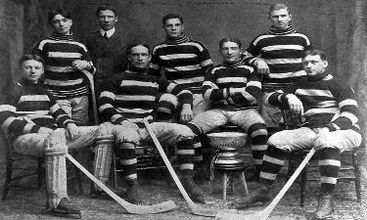 | 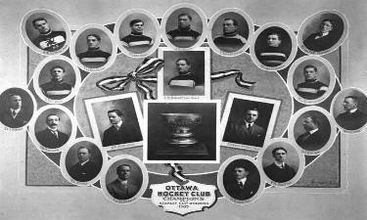 | 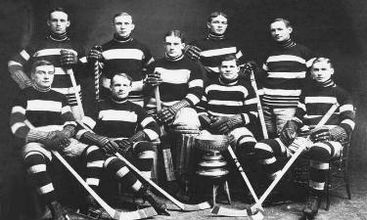 |
 | 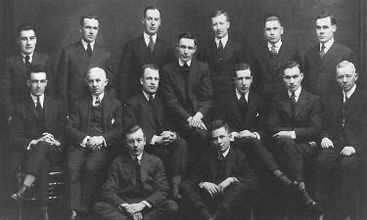 | 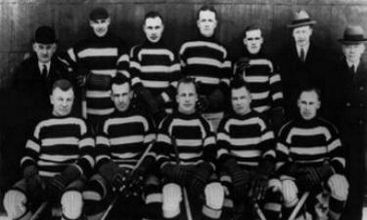 |
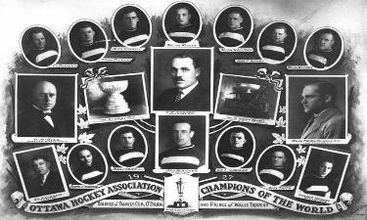 |
Original Senators Arenas
Modern Senators Arenas
Silver Senators
 Bowse Hutton 1898-1904 | 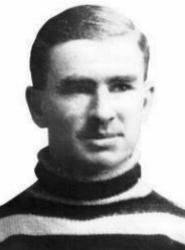 Frank McGee 1902-1906 | 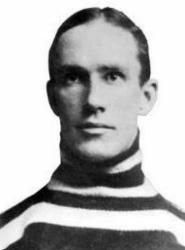 Harvey Pulford 1900/01, 1902-1908 | 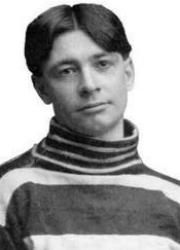 Harry Westwick 1901-1908 |  Alf Smith 1902-1907, 1907-1909 | 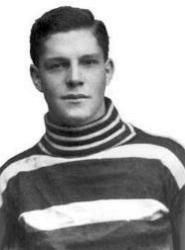 Billy Gilmour 1902-1904, 1904-1906, 1908/09 |
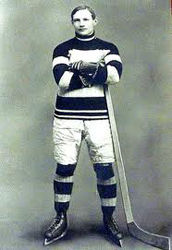 Bruce Stuart 1908-1911 | 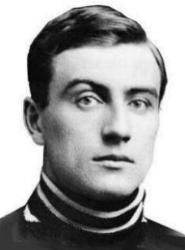 Marty Walsh 1907-1912 | 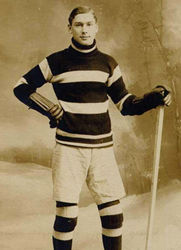 Albert Kerr 1909-1912 | 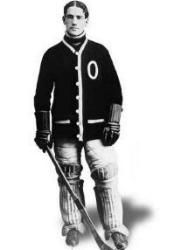 Percy LeSueuer 1905-1914 | 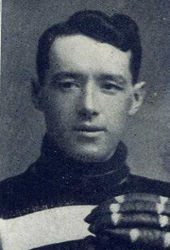 Skene Ronan 1911-1914, 1918/19 |  Art Ross 1914-1916 |
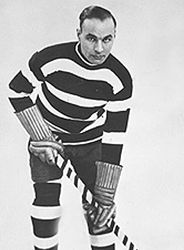 Sprague Cleghorn 1918-1920 | 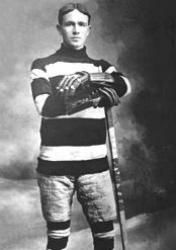 Jack Darragh 1910-1922, 1922-1924 |  Clint Benedict 1912-1924 | 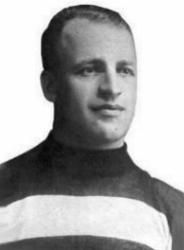 Eddie Gerard 1913-1922, 1922-1924 | 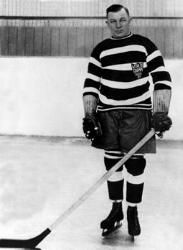 Punch Broadbent 1912-1915, 1918-1924, 1927/28 | 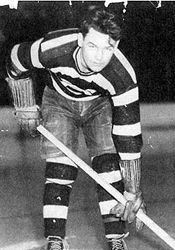 Ed Gorman 1924-1927 |
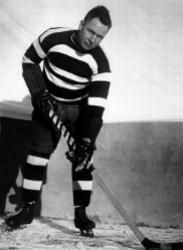 Cy Denneny 1916-1928 | 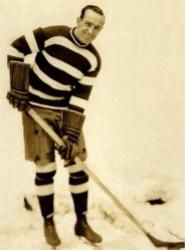 George Boucher 1915-1929 | 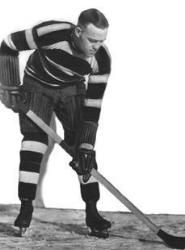 King Clancy 1921-1930 | 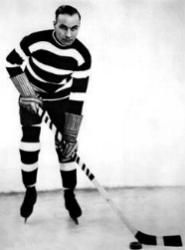 Frank Nighbor 1915-1930 1924 Hart Trophy | 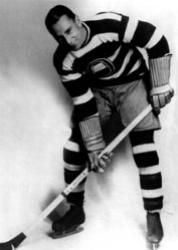 Joe Lamb 1928-1931 | 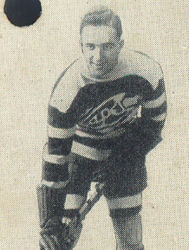 Art Gagne 1929-1932 |
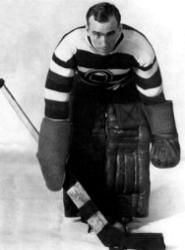 Alex Connell 1924-1931, 1932/33 | 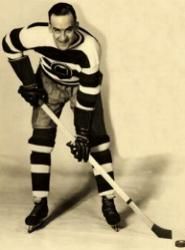 Alex Smith 1924-1931, 1932/33 | 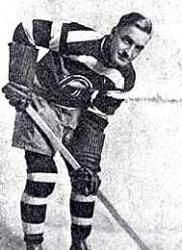 Hec Kilrea 1925-1931, 1932/33 | 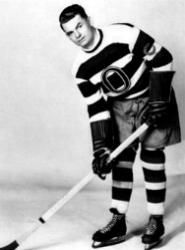 Frank Finnigan 1923-1931, 1932-1934 | 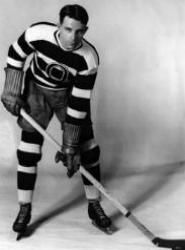 Bill Touhey 1928-1931, 1932-1934 | 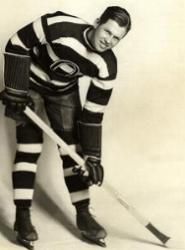 Syd Howe 1929/30, 1932-1934 |
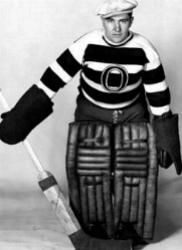 Bill Beveridge 1930/31, 1932-1934 | 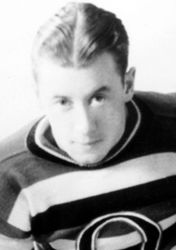 Des Roche 1932-1934 | 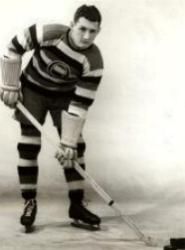 Conney Weiland 1932-1934 | 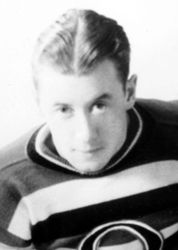 Max Kaminsky 1933/34 | 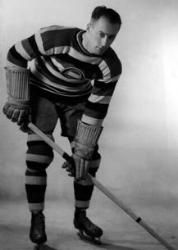 Earl Roche 1933/34 | 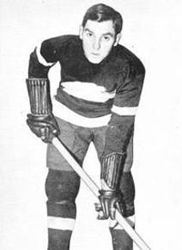 Carl Voss 1933/34 |
Sensational Senators
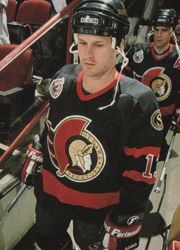 Jamie Baker 1992/93 | 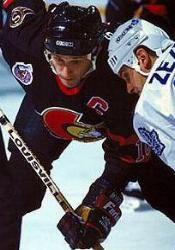 Laurie Boschman 1992/93 | 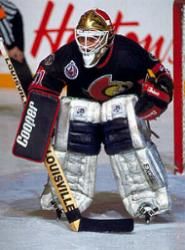 Peter Sidorkiewicz 1992/93 | 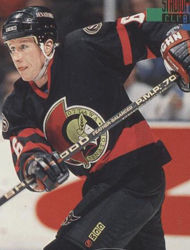 Gord Dineen 1992-1994 | 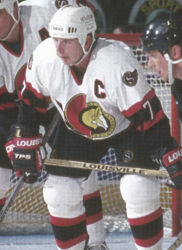 Mark Lamb 1992-1994 | 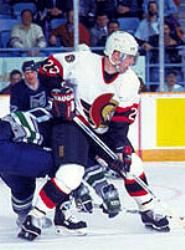 Norm Maciver 1992-1995 |
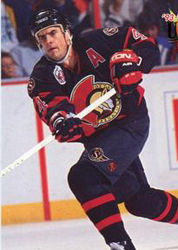 Brad Shaw 1992-1995 | 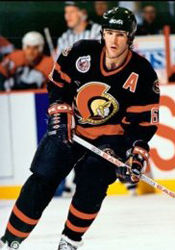 Sylvain Turgeon 1992-1995 | 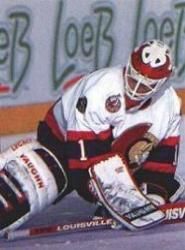 Craig Billington 1993-1995 | 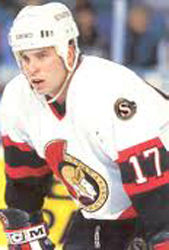 Dave McLlwain 1993-1996 | 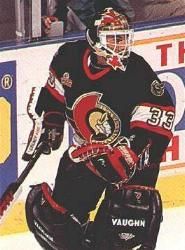 Don Beaupre 1994-1996 | 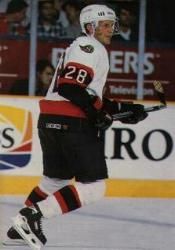 Steve Duchesne 1995-1997 |
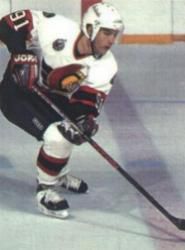 Alexandre Daigle 1993-1998 | 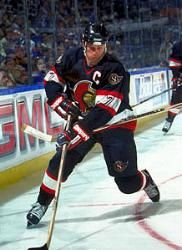 Randy Cunneyworth 1994-1998 | 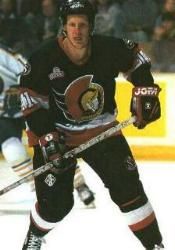 Daniel Alfredsson 1996 Calder Trophy | 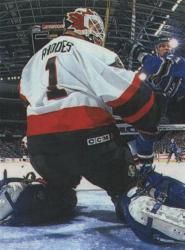 Damian Rhodes 1995-1999 | 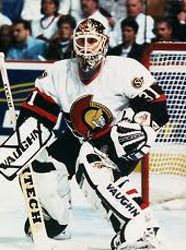 Ron Tugnutt 1996-2000 | 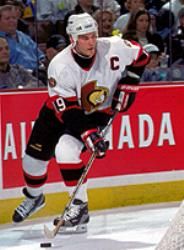 Alexei Yashin 1994-2001 |
 Andreas Dackell 1996-2001 | 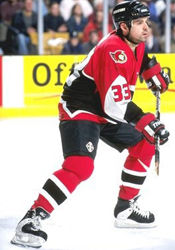 Jason York 1996-2001 | 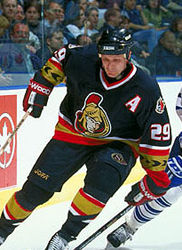 Igor Kravchuk 1997-2001 | 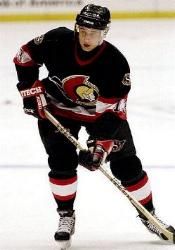 Vaclav Prospal 1997-2001 | 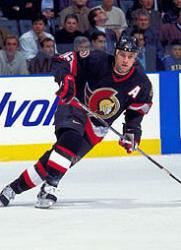 Shawn McEachern 1996-2002 | 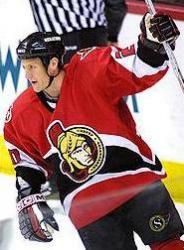 Magnus Arvedson 1997-2003 |
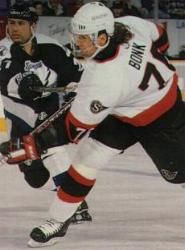 Radek Bonk 1994-2004 | 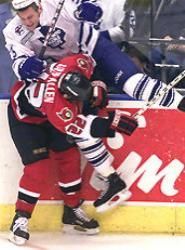 Shaun Van Allen 1996-2000, 2000-2004 | 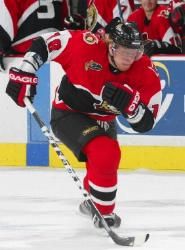 Marian Hossa 1997-2004 | 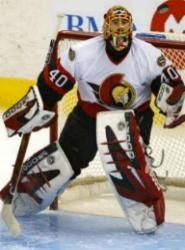 Patrick Lalime 1999-2004 | 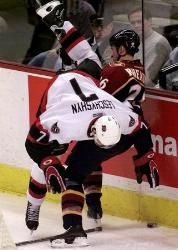 Curtis Leschyshyn 2000-2004 | 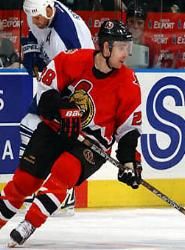 Todd White 2000-2004 |
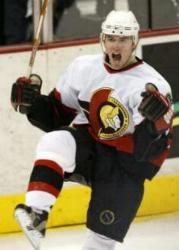 Martin Havlat 2000-2006 | 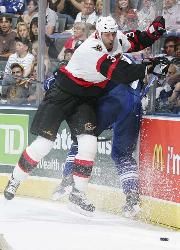 Zdeno Chara 2001-2006 | 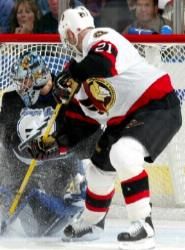 Brian Smolinski 2002-2006 | 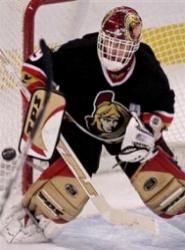 Dominik Hasek 2005/06 | 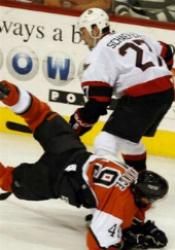 Peter Schaefer 2002-2007 | 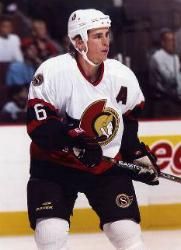 Wade Redden 1996-2008 |
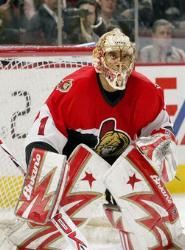 Ray Emery 2002-2008 | 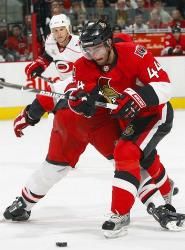 Patrick Eaves 2005-2008 | 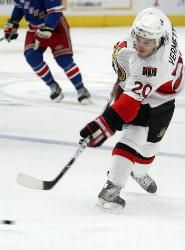 Antoine Vermette 2003-2009 | 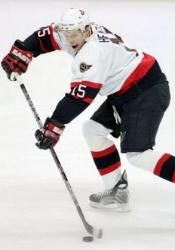 Dany Heatley 2005-2009 | 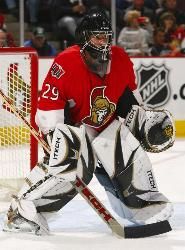 Martin Gerber 2006-2009 | 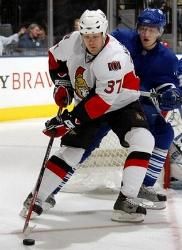 Dean McAmmond 2006-2009 |
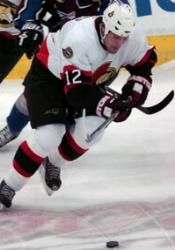 Mike Fisher 1999-2011 | 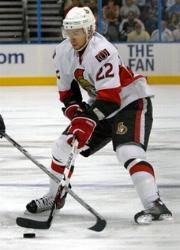 Chris Kelly 2003-2011 | 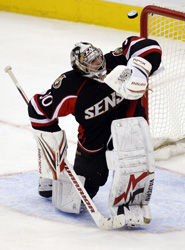 Brian Elliott 2007-2011 | 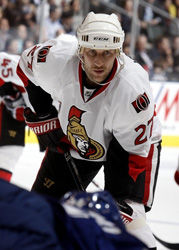 Alexei Kovalev 2009-2011 | 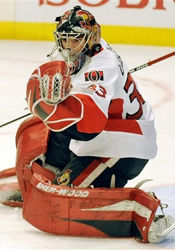 Pascal Leclaire 2009-2011 | 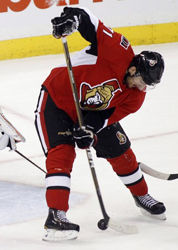 Nick Foligno 2008-2012 |
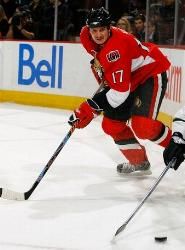 Filip Kuba 2008-2012 | 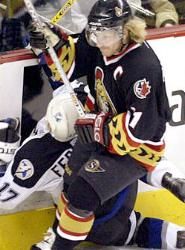 Daniel Alfredsson 1995-2013 | 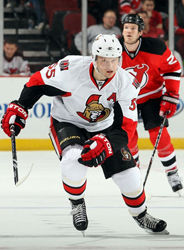 Sergei Gonchar 2010-2013 | 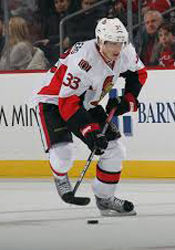 Jakob Silfverberg 2012/13 | 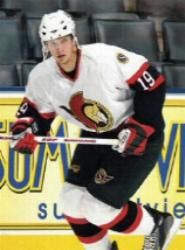 Jason Spezza 2002-2014 | 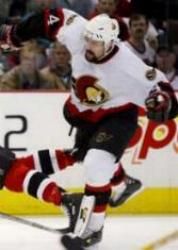 Chris Phillips 1997-2015 |
 Robin Lehner 2011-2015 | 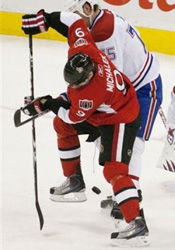 Milan Michalek 2009-2016 |  Colin Greening 2010-2016 | 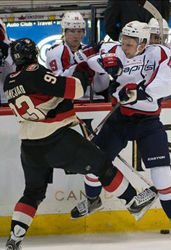 Mika Zibanejad 2011-2016 | 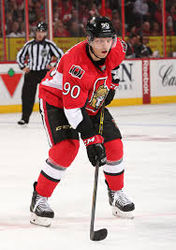 Alex Chiasson 2014-2016 | 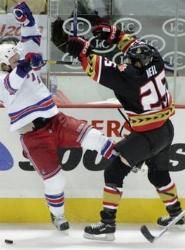 Chris Neil 2001-2017 |
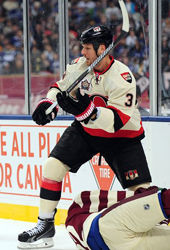 Marc Methot 2012-2017 | 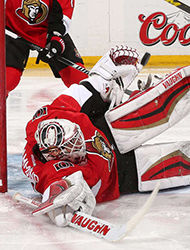 Andrew Hammond 2013-2017 | 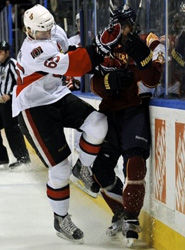 Erik Karlsson 2009-2018 2012 & 2015 Norris Trophy | 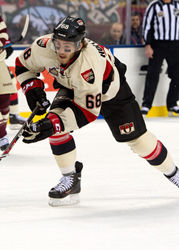 Mike Hoffman 2011-2018 | 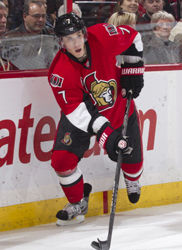 Kyle Turris 2011-2018 | 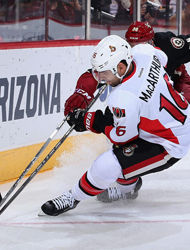 Clarke MacArthur 2013-2018 |
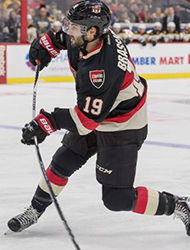 Derick Brassard 2016-2018 | 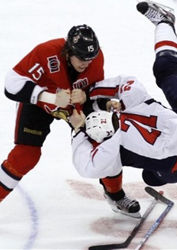 Zack Smith 2008-2019 | 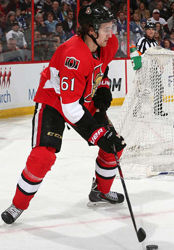 Mark Stone 2011-2019 | 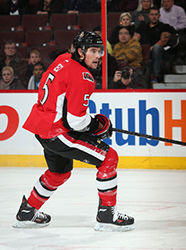 Cody Ceci 2013-2019 | 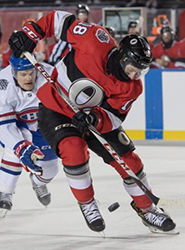 Ryan Dzingel 2015-2019 | 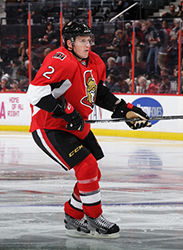 Dion Phaneuf 2015-2019 |
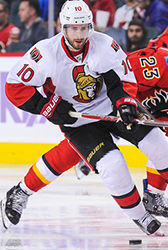 Tom Pyatt 2016-2019 |  Matt Duchene 2017-2019 | 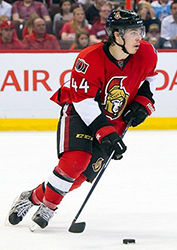 Jean-Gabriel Pageau 2012-2020 | 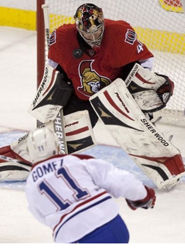 Craig Anderson 2010-Present | 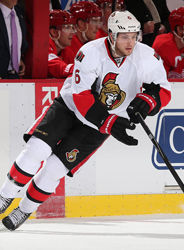 Bobby Ryan 2013-Present | 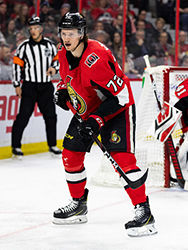 Thomas Chabot 2016-Present |
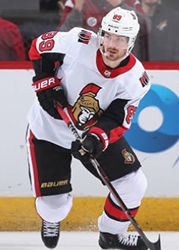 Mikkel Boedker 2018-Present | 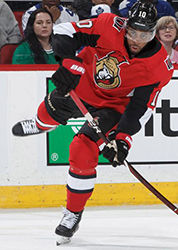 Anthony Duclair 2018-Present | 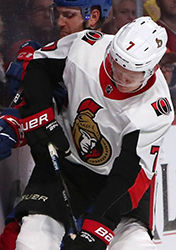 Brady Tkachuk 2018-Present | 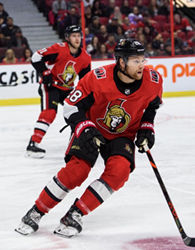 Connor Brown 2019-Present |

